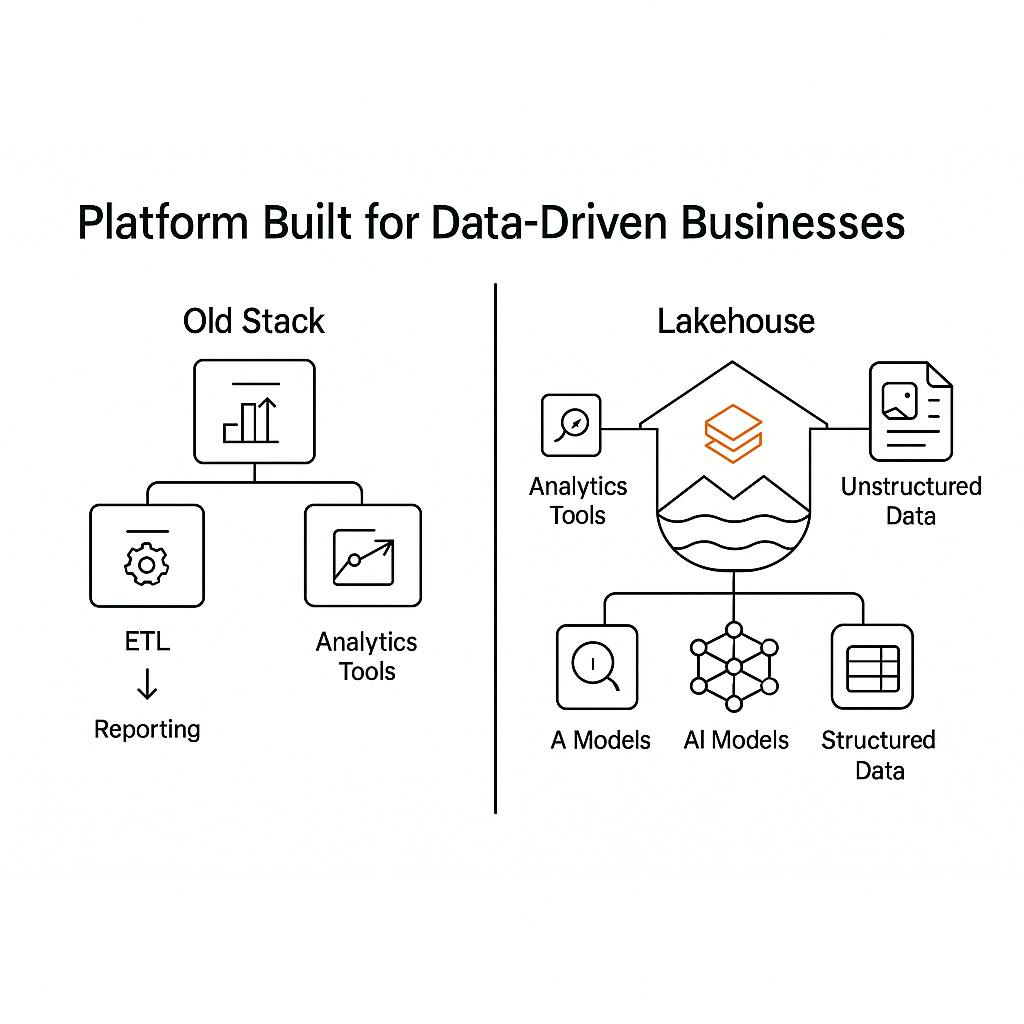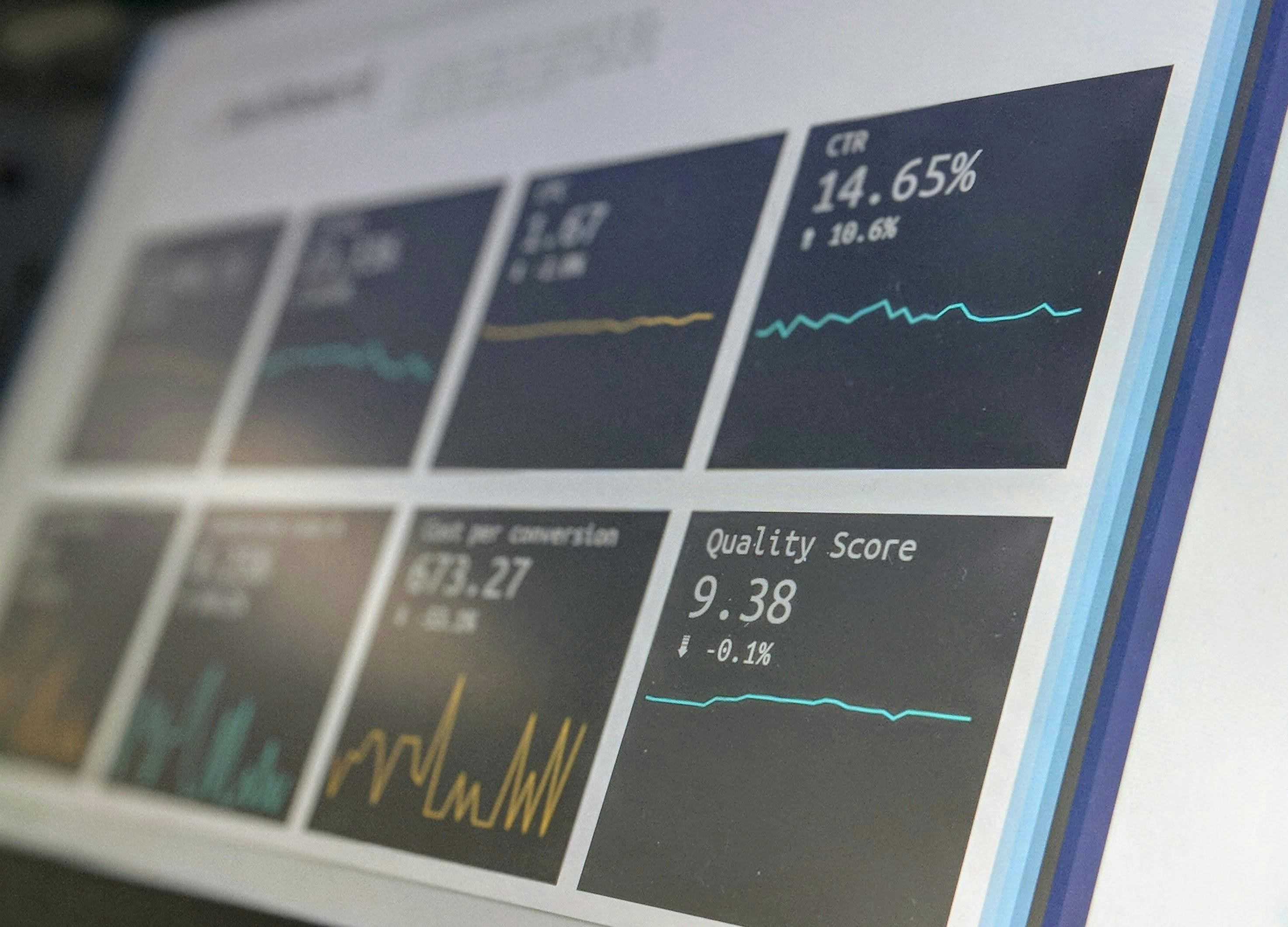
Why People Are Moving to Databricks - And Why You Should Too
Why People Are Moving to Databricks - And Why You Should Too
By Gareth Martin, CEO
It started with the data engineers but now we’re all catching on!
The data and AI space is evolving fast. Over the last few years, I’ve worked with leaders within organisations across numerous sectors; finance, life sciences, travel and health for example, and one trend is increasingly clear — more and more of them are moving to Databricks.
Why?
Because Databricks is changing what’s possible.
Is it time you took a closer look? If you haven’t already!
A Platform Built for Data Driven Businesses

A Platform Built for Data Driven Businesses
Legacy data stacks were built for reporting. Today, that’s not enough.
Businesses now need platforms that can handle structured and unstructured data, run advanced analytics, train AI models, and support real-time decisioning all in one place.
Databricks delivers exactly that.
It combines the flexibility of a data lake with the performance of a warehouse, all wrapped in an environment designed for collaboration across engineering, analytics, and data science teams. That’s the lakehouse model. And it's proving to be a game-changer.
Check out the Barilla story and imagine trying to do this on a traditional data warehouse or database centric platform.
AI-Ready by Design
AI-Ready by Design
If your organisation is serious about leveraging AI - not just talking about it, Databricks is where you’ll likely end up.
From scalable ML pipelines to foundation model fine-tuning, vector search, and integrated feature stores, it’s engineered for real AI work. And as GenAI takes hold across industries, this matters more than ever.
The acquisition of Mosaic AI is a perfect example of this in action. To truly differentiate in the medium term, organisations will need to move to AI models which are tuned on the business’s own internal knowledge base. This is what truly differentiates from the off the shelf models. This is an offering that Databricks created very early in the GenAI revolution.
Open, Interoperable, and Future-Proof

Open, Interoperable, and Future-Proof
One of the reasons we recommend Databricks to our clients is its commitment to open standards. Delta Lake, MLflow, Unity Catalog — these aren’t just Databricks features, they’re open technologies.
Selecting technologies that have a proprietary data model creates a risk potential that the data will be inaccessible or at least more difficult to access. In a world of democratising access to data, open standards are key.
That means fewer proprietary constraints, easier integration, and less risk of getting boxed into a corner down the line.
Proven at Scale — With Governance Built In
Proven at Scale — With Governance Built In
Databricks is being used in some of the most demanding environments out there — in banking, pharma, retail and public sector for example. It scales to meet enterprise needs without compromising on governance, auditability, or performance. Unity Catalog is the key component in enabling this by covering access control, discovery, lineage and audit; thereby not only manging, but also protecting your data.
It’s not just about speed or scale — it’s about trust.
An Ecosystem That’s Moving Quickly
An Ecosystem That’s Moving Quickly
The pace of innovation in the Databricks ecosystem is another reason people are moving.
From real-time analytics to LakehouseIQ, the platform is evolving rapidly. Its partner network (including SAP, Microsoft, and now literally thousands of others) is growing just as fast. Many of those technology platform partners are integrated in a zero-copy model enabling you to access the data from the integrated system (like SAP) without having to move it all to the Databricks platform.
Perhaps most import is the increasingly mature talent pool — including many we work with at Manuka AI — meaning the barriers to adoption are lower than ever.
So What’s the Business Case?

So What’s the Business Case?
It comes down to three things:
- Speed — of development, deployment, and insight — get to business value quicker
- Simplicity — one platform instead of five stitched-together tools — easier to manage and maintain
- Scalability — for data, for AI, and for growth — enabling you to meet the changing needs of your customers
In real terms, we’ve seen clients cut time-to-value by 30–50%, reduce rework and duplication across teams, and unlock entirely new ways of delivering data and AI capabilities into the business.
Final Word
Final Word
At Manuka – The Databricks People, we help organisations build intelligent systems that can adapt and scale. Databricks plays a central role in that. It’s where the industry is heading — and for good reason.
We selected the best platform, and we think you should too.
If you’re still wrestling with siloed platforms, batch ETL, or AI that never makes it into production, maybe it’s time for a change.
Let’s have the conversation.
Explore Our Services
Explore Our Services

Data Platform
Architecting and engineering solid data foundations and scalable data services on which AI and BI solutions can be developed, now and long into the future.

Artificial Intelligence
Collaborating to build and deploy bespoke AI solutions that unlock value and improve performance in your business; including Generative AI, Machine Learning and Optimisation.

Data & AI Advisory
Helping to identify opportunities for data and AI, leverage advanced technology and improve ways of working to stay competitive, mitigate risk and unlock your data’s full potential.